Program Leaders
Young ACS
Research Theme
Atherosclerosis is a progressive disease characterized by the accumulation of lipids, inflammatory cells, and fibrous elements within the arterial walls, leading to the formation of plaques. These plaques can narrow the arterial lumen, reducing blood flow, and may rupture, causing thrombotic events. Over time, the atherosclerotic process contributes to major cardiovascular complications such as myocardial infarction, stroke, and peripheral arterial disease. The development of atherosclerotic plaques is driven by a complex interplay of vascular cell types and molecular signals. Endothelial cells, which line the arteries, play a crucial role in maintaining vascular homeostasis. Endothelial dysfunction is associated with risk factors such as hypertension, smoking, dyslipidemia, and diabetes, which are influenced by lifestyle and genetic background. The onset of atherosclerosis is characterized by increased vascular permeability and the recruitment of monocytes and macrophages. These immune cells engulf lipids to become foam cells, a hallmark of early plaque development. Smooth muscle cells residing in the vessel wall contribute to atherosclerotic plaque formation by expanding and adopting foam cell, fibrotic, or calcifying phenotypes. T-lymphocytes and other immune cells release pro-inflammatory cytokines that exacerbate plaque progression and destabilization.
Aortic diseases such as aortic aneurysms (abnormal dilations) and aortic dissections (tears in the vessel wall) are life-threatening conditions. Aortic dissections involve an acute tear in the aortic intima that allows blood to enter the vessel wall, creating a false lumen that can obstruct blood flow to vital organs. Development of aortic disease is multifactorial and complex to investigate. Atherosclerosis and aortic diseases share many pathophysiological features: vascular matrix remodeling, smooth muscle cell dysfunction, and chronic inflammation lead to degradation of the aortic wall’s structural integrity, making it prone to dissection or rupture. Furthermore, the same risk factors that drive atherosclerosis, such as hypertension, smoking, and lifestyle factors, along with genetic predispositions, can also contribute to the development and progression of aortic disease.
Understanding the pathophysiological processes underlying atherosclerosis and aortic disease is crucial for developing strategies to prevent, detect, and manage these conditions. Advances in imaging techniques, medical therapies, and surgical interventions have improved outcomes for patients, but continued research and public health efforts are essential to reduce the global burden of atherosclerotic and aortic disease.
Research strategy
Building on these insights, our research at Amsterdam UMC adopts a multidisciplinary approach that integrates molecular biology, pre-clinical model systems, genetics, imaging, and clinical studies to advance the understanding and management of these diseases. We align diverse research efforts in ageing, lipid metabolism, vascular barrier integrity, inflammation, adiposity, ischemia-reperfusion, arteriogenesis, novel imaging, circulating biomarkers, and clinical translation. Our research lines focus on healthy aging, prevention of complications and cardiovascular diseases with a personalized approach. We conduct studies that touch base with digitalization: implementing communication apps, biobanking, data platforms, AI and cover diversity (age, gender and ethnicity). The integrated and collaborative nature of our fundamental, translational and clinical scientists promises a significant impact in this area of research. Through collaboration and innovation, the atherosclerosis and aortic diseases research theme is shaping the future of cardiovascular care, ensuring healthier aging and reducing disease burden for diverse populations worldwide.
Program members
-
Abraham Stijn Meijnikman
-
 Ahmet DemirkiranDRS.
Ahmet DemirkiranDRS. -
Albert WiegmanPI DR.
-
Alessandra MaugeriDR.
-
Alex NapDR.
-
Alexander VonkPI DR.
-
Amber Schonk
-
Andrew Li YimMSc
-
Anke van Bergen
-
Anna Geraedts
-
Anna van VeelenDR.
-
 Annefleur de BruijnDR.
Annefleur de BruijnDR. -
Annett de HaanBEng
-
 Annette NeelePI PhD
Annette NeelePI PhD -
Annick HartstraMD
-
Ann-Sofie SchauwvliegheMD
-
Arjan HoksbergenDR.
-
Arjan HouwelingDR.
-
 Arjen CupidoMD MSc
Arjen CupidoMD MSc -
Arnout Mieremet
-
Bart CornelissenMSc
-
Bas van der VeenMD MSc
-
Bert-Jan van den BornPI PROF.DR.
-
Bhavesh Sonwani
-
 Bimmer ClaessenPI MD PhD
Bimmer ClaessenPI MD PhD -
 Bram CoolenMEng PhD
Bram CoolenMEng PhD -
Bram PriemDRS. DRS.
-
Bram van Os
-
Bram van Steen
-
Carmen Yap
-
Casper Coerkamp
-
Cees OudejansPI PROF.DR.
-
Chantal van der HorstPI PROF.DR.
-
Charles Hayfron-BenjaminDR.
-
 Charles MajoiePI PROF.DR.
Charles MajoiePI PROF.DR. -
Cindy van RoomenBEng
-
Claudia van TielPhD
-
 Coert ZuurbierPI DR.IR.
Coert ZuurbierPI DR.IR. -
Daisy Vedder
-
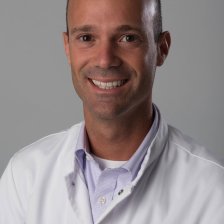 Danny CohnDR.
Danny CohnDR. -
 Daphne NaessensPhD
Daphne NaessensPhD -
Davide Vacondio
-
 Debbie Kalkman
Debbie Kalkman -
Didier CollardDR.
-
Dimitris KarkalousosBSc MSc
-
Dion Muller
-
 Dirk FaberIR.
Dirk FaberIR. -
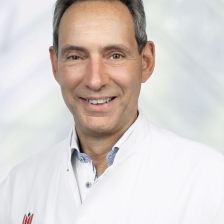 Dirk UbbinkPI DR.
Dirk UbbinkPI DR. -
 Edwin van der PolPI MEng PhD
Edwin van der PolPI MEng PhD -
Eline NannenbergDR.
-
Elmar GoolMEng MSc
-
 Erik BakkerPI DRS.
Erik BakkerPI DRS. -
 Erik BeuneMSc PhD
Erik BeuneMSc PhD -
Erik StroesPI Prof. MD PhD
-
Esmeralda BosmaMSc
-
 Eva AalbregtDRS.
Eva AalbregtDRS. -
 Eva GroenendijkMSC.
Eva GroenendijkMSC. -
 Eva van der LindenDR.
Eva van der LindenDR. -
Fabienne Stubenrouch
-
 Fabrice MartensPROF.DR.
Fabrice MartensPROF.DR. -
Femke Horstman
-
Fianne Spaander
-
 Floriaan SchmidtPI
Floriaan SchmidtPI -
Frans van IttersumPI PROF.DR.
-
 Frederiek de Heer
Frederiek de Heer -
Gerard HovinghPI Prof. MD PhD
-
Gerrit VeenDR.
-
Gilbert Wijntjens
-
 Ginger Beau Langbroek
Ginger Beau Langbroek -
Gino Jansen
-
Gracia Habib
-
Guillermo Griffith
-
 Gustav StrijkersPI DR.IR.
Gustav StrijkersPI DR.IR. -
Hajar Hassani Lahsinoui
-
 Harald JorstadPI DR.
Harald JorstadPI DR. -
 Harm EbbenMD DR. PhD
Harm EbbenMD DR. PhD -
 Helga de VriesPI PROF.DR.
Helga de VriesPI PROF.DR. -
 Henk MarqueringPI DR.
Henk MarqueringPI DR. -
Henk van VoorstMD MSc
-
Hessel Poelman
-
Hideyuki Kawashima
-
Hillian NederhoedDR.
-
 Hung-Jen (Oliver) ChenMD
Hung-Jen (Oliver) ChenMD -
IJsbrand ZijlstraDR.
-
Ilse Luirink
-
Indra Melessen
-
Indri Supriadi
-
 Inge Mulder
Inge Mulder -
Inge van WijkDR.
-
Ingeborg Waas
-
Ioannis Lagogiannis
-
 Isa Mast
Isa Mast -
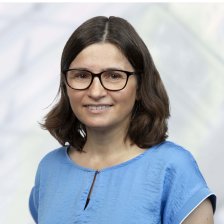 Ivana IsgumPI
Ivana IsgumPI -
 Iwan DobbePhD
Iwan DobbePhD -
Jaap van BuulPI
-
Jan BlankensteijnPROF.DR.
-
Jan ReekersProf. PhD
-
 Jan Van den BosschePI DR.IR.
Jan Van den BosschePI DR.IR. -
Jan Willem van Rijswijk
-
Janina SchwarzMSc
-
Jasper Hennecken
-
 Jeffrey KroonPI PhD
Jeffrey KroonPI PhD -
 Jelle HimmelreichMSc
Jelle HimmelreichMSc -
Jelle van den Beukel
-
 Jerke van den Berg
Jerke van den Berg -
 Jill Bracht
Jill Bracht -
Joëlle Elias
-
Johanna Hakonen
-
John KasteleinProf. MD PhD
-
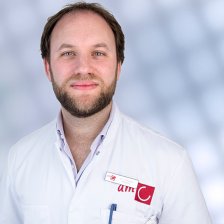 Jonathan CoutinhoPI MD PhD
Jonathan CoutinhoPI MD PhD -
Jord Seegers
-
Jorge DahdalDR.
-
 Jorien TreurPI
Jorien TreurPI -
Jorrit LemkesDRS.
-
 Jose Simao HenriquesPI PROF.DR.
Jose Simao HenriquesPI PROF.DR. -
 Josephine M.E. TanDR.
Josephine M.E. TanDR. -
Joyce Rops
-
 Judith de VosBSc
Judith de VosBSc -
Julia HoutzagerMSC.
-
Julia Witjes
-
Julian van CapelleveenDR.
-
Juultje SommersMD
-
 Kak Khee YeungPI PROF.DR.
Kak Khee YeungPI PROF.DR. -
Karis Karismananda
-
Katarzyna Krzywicka
-
Katie Hanford
-
Kevin Mol
-
Kim Dzobo
-
Kirill Buiankin
-
 Koen PrangePhD
Koen PrangePhD -
Koenraad MarquesDR.
-
Lara VosDRS.
-
Laura BosmansMSc PhD
-
Laura Carneiro Penetra Pires Angeja
-
Leo GeeraedtsDR.
-
Leo HofstraPI PROF.DR.
-
Lindy Alles
-
Lisa SmeehuijzenDr.
-
Lisa van Slagmaat
-
Lisa WillemsenMSc
-
Loes Peters
-
Lotte Rijken
-
Lotte Stiekema
-
Lubna Ali
-
 Lucas de Vries
Lucas de Vries -
 Ludo BeenenMD PhD
Ludo BeenenMD PhD -
Luke CarrollMSC.
-
Maarten Graumans
-
Maartje HofMSC.
-
Maartje SierMD
-
Machteld Boonstra
-
Madeleine VaderDRS.
-
Madelon MinnebooDRS.
-
Madieke LiemMD
-
Mahsa MojtahediIR.
-
Maik GrundekenDR.
-
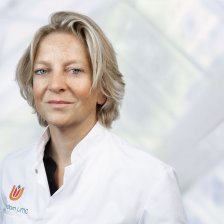 Majon MullerPI PROF.DR.
Majon MullerPI PROF.DR. -
Manon KappelhofDRS.
-
Manon van den Bogaart
-
 Marc HilhorstPI
Marc HilhorstPI -
Marco GotteDR.
-
Marcus BeijkDR.
-
Maria GijbelsPhD
-
Mariah Daal
-
 Marie van DijkPI DR.
Marie van DijkPI DR. -
Marije VisDR.
-
Marije Wijnberge
-
Maritta van Stigt
-
Marjolein AdmiraalDR.
-
 Marjolein Snaterse-ZuidamMSc PhD
Marjolein Snaterse-ZuidamMSc PhD -
Mark HofmanDR.
-
Mark KoelemaijPI DR.
-
Marlene van den BergBEng
-
 Marten HoeksemaPI
Marten HoeksemaPI -
Martijn de BruinPI BSc MSc PhD
-
Martijn Klaver
-
Martijn van MourikMSc
-
Martin Poinsinet de Sivry-Houle
-
Martine WillemsDRS.
-
 Mat DaemenPI PROF.DR.
Mat DaemenPI PROF.DR. -
Matej Loncaric
-
Matthias Hilty
-
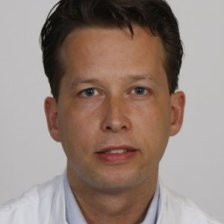 Matthijs BoekholdtDR.
Matthijs BoekholdtDR. -
Matthijs Jansen
-
Max Hoebink
-
 Max Zwartjes
Max Zwartjes -
Maxim Annink
-
 Mayte Sanchez van Kammen
Mayte Sanchez van Kammen -
 Meagan DoppegieterMSc
Meagan DoppegieterMSc -
 Mendel Engelaer
Mendel Engelaer -
 Menno de WintherPI Prof. PhD
Menno de WintherPI Prof. PhD -
Merel Hartgers
-
Merel Peletier
-
Mieke Haverkamp
-
 Mike NurmohamedPI PROF.DR.
Mike NurmohamedPI PROF.DR. -
Milou ter Braak
-
Mina Karami
-
Mirza IduDR.
-
Mohammed GhiboubMSc
-
Mona Shahsavari



